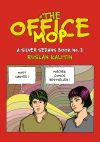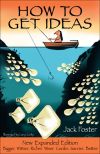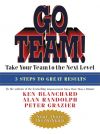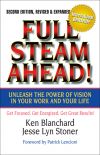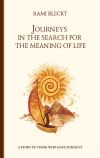Правообладателям!
Представленный фрагмент книги размещен по согласованию с распространителем легального контента ООО "ЛитРес" (не более 20% исходного текста). Если вы считаете, что размещение материала нарушает ваши или чьи-либо права, то сообщите нам об этом.Читателям!
Оплатили, но не знаете что делать дальше?
Текст бизнес-книги "Now We Are 40"
Автор книги: Tiffanie Darke
Раздел: Жанр неизвестен
Текущая страница: 4 (всего у книги 5 страниц)
As their traction grew, so did the interest of the big corporates, and in 2009, pre sugar crisis, Coca-Cola invested in the company – going on to buy it out three years later for £100m. ‘When we cashed in I ended up with a big number in my bank account – and believe you me it was about 30 per cent bigger than the number we thought we could ever achieve in our wildest dreams. But far better than that was the fact that everybody in that building also had a number in their bank account that day,’ says Reed.
‘We made several millionaires, and that for me was the benefit of what we did. That was where I felt good about what we had done, and was worth far more to me than the 10 per cent profit difference in my own actual number. Do you need that extra 10 per cent or are you going to get more spiritual value for sharing that out amongst the people that got you there? I still don’t understand even today why other businesses don’t do that.’
The truth is, many new businesses now do build in an ownership or partnership structure. As the dotcom queen Martha Lane Fox says, ‘Everything I’ve started now is not for profit, but I like to think that the world has so dramatically shifted that unless you embed some wider social purpose right from the beginning, your brand would not be so robust. If I was starting my travel business Lastminute.com again, I think people would now expect that extra dimension of “Okay, so you’re doing all this travel, where’s the carbon offsetting? Why don’t you have more holidays to help clean up beaches?” You’d have to invent that right at the beginning, but it didn’t occur to us when we started that social purpose was something.’
It wasn’t just marketing and social purpose that Generation X brought to business, it was also design. Products and services needed to be cool if they were going to be at all desirable (whereas now in our world of frenetic speed, practicality is enough. Just ask Amazon – the ugliest and most successful service in the world).
Matt Roberts was single-minded in his pursuit of design and lifestyle cues when he was setting up his fitness brand. ‘I was fascinated by the cool stuff, about how you lived your life. I spent a lot of time going round anywhere that was cool to try and get bits of what they did. I got my hair cut in Nicky Clarke by Nicky because he was then the stylist. I used to go and stay at the Wilton Hotel in New York because that was the cool place to go – it was dark and moody. I’d eat at Quaglino’s, and when Conran opened the restaurant Mezzo, that was a big deal. I picked up things from magazines like The Face and Arena. That was a really formative time to be in London. It was the start of what happens now. This hotel here, this is the net result of all of those different things.’
Matt is sitting in the Mondrian, one of London’s latest ‘design’ hotels, in a modern lobby designed by Tom Dixon (X-er), drinking expensive coffee on tasteful yet slightly challenging furniture. Roberts is right at home. His tightly disciplined body is neatly clothed in Boss and Prada, while the scent of Tom Ford hangs about his neck. Initially, Roberts trained to be a sprinter, with his sights set on the Olympics. He dropped out when he realised his friend and training partner – Darren Campbell – was going to be a whole lot better than him. Roberts didn’t want to be second best, so instead he turned to business and for inspiration looked to America, which in the Eighties and early Nineties was way ahead of London both in lifestyle and business.
‘The first time I went to New York, in the mid Nineties, I thought it was the coolest place on the planet,’ he says. ‘I started doing courses there and I’d come back fired up. But then London would drag you down slightly. It didn’t have quite the same drive. What the US did was package things well, the front sell was really good. Behind it, the substance wasn’t that amazing, but it looked incredible.’
What was happening in America wasn’t that exposed over here – there was much less media to tell you about it, which gave New York cool hunters an opportunity in Europe. What Roberts saw in New York was a swelling fitness industry – better standards in terms of what was on offer in gyms, and greater engagement in the population. If getting fit could be made to look a little more attractive, and it could fit in with people’s lifestyles rather than the other way round, maybe it might just catch on. So he launched a bespoke training service in Mayfair, made his gyms high design and hi tech, and started attracting aspirational clients like Geri Halliwell and Elle Macpherson.
Roberts had his opportunity. Celebrities began to take on personal trainers, and paparazzi pictures of LA gym bunnies like Madonna, Jennifer Aniston and Gwyneth in their sportswear ramped up the idea fitness could actually be a fashion choice. With no cool gyms to go to, people turned to books, which served Roberts well: ‘In my prime, we’d sell 40,000 copies of a book a month. One of my books was selling in 26 countries, doing phenomenal things.’
The marketing plan was working.
4
When Noel Gallagher Went to Number 10
Marketing, advertising, PR, and any of the media that relied on those things, from magazines to TV stations, were proliferating. Digital wasn’t happening yet (we weren’t even using email – imagine that), nor were mobile phones much of a thing. But media was growing – mass media as it began to be known. Media studies courses became absurdly popular, because media looked like it wasn’t just about making money, it was about being creative and having a good time.
‘I remember after uni some people were going off to get jobs in management consultancy,’ says Richard Reed. ‘What was management consultancy? They said they were going to get jobs in the City and I was like, “What? London?” I didn’t even know the “City” existed. I went for an interview with P&G to be a sales person, and I thought, “Really? Drive round shops selling shampoos? No thanks.” I went into advertising because it sounded fun.’
For those then that couldn’t sing or dance or write or act or draw or paint or take photographs or design or make – there was advertising. The advertising industry would like to think of itself as one of the cornerstones of Britain’s creative industries, but Britain’s creative industries would be horrified to include it in their midst. ‘I remember making this ad for a car brand,’ says Reed. ‘It was pictures of ordinary people holding placards with surprising things written on them. A picture of a guy in a suit holding a sign saying “By night I’m Melinda” – that kind of thing. At the time the artist Gillian Wearing had done exactly that and won the Turner Prize. The advertising creative had totally ripped it off.’
The advertising industry regards itself with astonishing self-importance. They hand out awards for bravery. Bravery, in advertising. When I started in the advertising business a few years ago, my Sunday Times colleague Marie Colvin had just lost her life in Syria reporting on the atrocities. I found it very hard to swallow someone being awarded a gong and a cash prize for their ‘bravery’ in rebranding an estate car.
But advertising can make a positive contribution to culture. You always remember the great ads – You’ve been Tango’d, Budweiser’s Wassup? and Marky Mark’s Calvins were Nineties classics. Nowadays the John Lewis Christmas TV spot, Nike’s sponsorship of young creative collectives and General Electric’s reporting on scientific innovation are all just as influential. But the advertising world is now largely swamped by digital: irritating pop-up ads and low-grade, interruptive creative that is actually prompting us to install ad blockers.
Those that commission advertising are being seduced by the online world of cheaply made content, prioritising the scale and frequency of distribution over what you are actually distributing. Just shout – shouting anything will do. The Nineties world of ad men and women would never have let a client get away with spending less than six figures on a creative. An advertising spread in a magazine requires care: thought, craft and budget. And how much memorable it is than some annoying bit of programmatic clickbait.
The halcyon years of the Nineties yielded so much creativity, and so much creative media to transmit and report on it. This boom in youth culture was a gift of the recession. As Noel Gallagher once said, ‘In the Eighties and Nineties it was really easy to start a band. We’ve got to thank Thatcher for all the disused warehouses we could rehearse in.’
Jamie East, founder of gossip website Holy Moly and now a radio presenter, started out as a singer in the indie band the Beekeepers. ‘We got a record deal in the mid Nineties, because we had been able to support our rehearsing on the dole. The dole was the lifeblood of the music industry, as it actively nurtured creative talent,’ he says. ‘You could sign on and be creative – artist, musician, designer – it gave you the luxury of time to do that. When they introduced Job Seeker’s Allowance, all of a sudden you couldn’t claim housing benefit and get your £37 dole. I remember we were front page of the Derby Evening Telegraph on the same day I was having to go and lie about having to sign on. The headline was “Derby band heroes go off on 4-week tour”, and I was down the dole office having to say I was actively looking for a job. It stifled everything.’ In the end East left the band and went off to work at Sky TV.
Media went from three TV stations to the national launch of another two terrestrials (Channel 4, Channel 5), then came satellite and cable, the launch of commercial radio stations (Kiss, Virgin), and the expansion of magazine publishing houses (Arena, Frank, Esquire, Q, Red and Elle Deco) and more national newspapers (the Correspondent, Today, the Independent).
TV was exciting – there was The Big Breakfast and The Word, anarchic, youth-oriented shows where the kids were in charge, and there were no rules. Paula Yates could seduce Michael Hutchence in bed live, bands could swear at Terry Christian, Amanda de Cadenet got a speaking part. Of course it wasn’t all creative, and someone had to pay for it. Canny types saw the opportunity to marry up brands with this new sexy media. Brands had the money, Britain was brimming with creativity. One of the most canny was Matthew Freud, whose PR agency brought the two together. His agency could place a packet of crisps on a TV show, or a toothpaste tube on a magazine cover; celebrities could be bought and sold; a soft drink could sponsor a film premiere. It gave PRs and brands the illusion they were in control, and gradually, they were.
Kris Thykier, Freud’s right-hand man, remembers Planet 24’s Christmas parties as ‘legendary’. The year Planet 24 launched The Big Breakfast, its other show The Word was in full flight. Two of the most anarchic TV programmes that had ever been made – produced and presented by young people, for young people. This wasn’t any longer middle-aged men in expensive suits in Madison Avenue and Soho telling young people what was cool. The kids were doing it for themselves.
‘We took over the Ark in Hammersmith, which had just been opened and was the building of the moment. We threw a party on the top floor and it was the first moment where you sensed there were young people in charge. It was the year the Groucho was up and running. I was 20 years old and already representing the programmes, the presenters and the production company, talking to all the newspapers. It was mad. But the media were encouraging it and we were storming it,’ he says. ‘That party that year was the meeting of the teams that made The Word and The Big Breakfast. Two shows, one first thing in the morning and one last thing at night, talking to a generation that hadn’t really been talked to by television before.’
The same thing was happening in the print world. Newspapers began to expand to accommodate all the new advertising streams, with features and lifestyle and fashion sections starting to appear. These sections naturally invited in more staff, many of them young and female. This was where my career took off: I went from being an unpaid work experience on the listings section of the Observer (a job I had blagged through a friend of a friend of a friend), to a paid researcher on their Life magazine supplement. From there I went to the Telegraph as a commissioning editor in charge of food (where my patrician, silver-haired boss called me ‘The Infant Tiffanie’ as I was, as far as he was concerned, outrageously young to be in the job).
Courted by PRs, riding the London cocktail circuit of launch parties and openings, it was the ideal spot to watch the Nineties unfold. Like Thykier, I went to some legendary parties and witnessed some great moments. I remember attending one party in Cannes at the film festival, hosted by MTV in Pierre Cardin’s space-age villa, a collection of pink Teletubby pods built into the edge of a cliff on the Cote d’Azur. Ostensibly the week-long festival in Cannes was a showcase of the film world’s upcoming releases – and they were so exciting, as directors like Quentin Tarantino and Guy Ritchie were bringing a rock ’n’ roll edge to Hollywood.
In 1998 Lock, Stock and Two Smoking Barrels was released, giving London an international film voice – and making it very attractive to brands looking to cash in. There were probably about a thousand people at the MTV party that year, every named DJ in the land playing, and endless test tubes of Absolut Vodka going round. Everyone was cool, young and fashionable. At three in the morning they closed the party down and emptied out the villa – and at four they started it up again, for those that remained. We danced on the terrace as the sun came up over the Mediterranean and there was nowhere cooler or more at the centre of things on earth than that terrace right then – we were all exactly where we wanted to be.
As such a source of economic prosperity, the thriving creative industries, which had previously been dismissed as a bit ridiculous and inconsequential, were now being embraced by the establishment. They were part of Brand Britain – something we could sell on to the world to drive our economy and elevate our national pride. Taking his cue from America, which was so good at marketing itself, the newly elected Tony Blair held an event in 1997 that was to become the pivotal moment of the Nineties. He celebrated his election with a series of parties at 10 Downing Street, and all these artists who had set themselves up as anti-establishment, disruptive voices, were invited to Number 10, the heart of the government.
Blair was Cool Britannia – he had rebranded politics and reinvented it for our generation. For a generation so expert on and obsessed by cool, Blair’s relative youth and embracing of the creative industries was intoxicating. He must be a good thing. One of the first things he did in government was celebrate British design and creativity with a party – a party! Suddenly the emblems of what had previously been considered fringe culture were invited in to be celebrated by the establishment itself. Thatcher had had little time for culture. After 18 years of Tory rule, there were clear changes afoot.
‘It was an exciting time, to have so many people from all these different industries included,’ says June Sarpong. ‘Architecture, design, he had them all. It wasn’t just the obvious musicians and fashion and art.’ Geri Halliwell had just brought the Union Jack in from the cold, Blur and Oasis were fighting it out for cool points, the cast of The Full Monty were on set, the ‘Sensation’ exhibition was about to open at the Royal Academy, Loaded was in full swing. Tony Robinson, Vivienne Westwood, Ben Elton, Chris Evans and Kevin Spacey all trooped up the street to that famous front door. Blair hit cool paydirt when he got the photograph of the decade – chortling over a glass of champagne with Noel.
‘The fact that a guy who’d been in a band, owned an electric guitar and has probably had a spliff was prime minister really meant something,’ said Gallagher later. ‘He might be one of us.’ And Blair knew how to handle himself. When Gallagher asked him how he had managed to stay up all night on the night of the election, he quipped, ‘Probably not the same way you did.’
‘That government, because they were all so young themselves, understood how important shaping British culture was, not just for Britain but as a message to the rest of the world,’ says June. ‘They understood the importance of selling that image so that the world wanted to be part of the UK. It was quite American thinking.’ Politics, then, began to use marketing too: the age of spin was born. Blair’s PR man was Peter Mandelson, a silver-tongued figure hated by the media for his slippery talking, whose responsibility was to cast the New Labour project as the bright dawn of liberal thinking. The danger was that the shiny sheen Mandelson applied to the policies and personalities left them open to suspicion.
Momentarily, Blair brought that disengaged group in from the outside. Ultimately, though, politics did not benefit from its embrace of marketing – in the end its reliance on spin just earned it distrust. By the time Cameron came along with his lookey-likey ‘Cool Britannia’ party (Eliza Doolittle and Ronnie Corbett: the guest list didn’t have quite the same cachet), the cultural zeitgeist had moved on. He would have done better to invite Millennial vloggers and the Silicon roundabout digipreneurs, but of course that just isn’t as sexy or cool. Cameron was a posh boy who went to Eton (nobody likes privilege) whereas Blair presented himself as classless. He may have come from a relatively affluent background and even gone to public school, but Blair was socially much harder to place – the level playing field we all wanted so much.
It was to be some time before the scales were to fall from our eyes. As Private Eye had it so perfectly, Tony Blair was our saviour. Working on a national newspaper, I was not only party to all the cultural changes happening around me, but was on the inside track of the political ones too. I felt like I was living right in the middle of it – and physically I was. I had moved in with a boyfriend (TV producer for one of the myriad new satellite channels) who lived in Primrose Hill, not far from Islington and the street where Blair lived up till the election. I used to visit one of my writers who lived near the Blairs’ old home, and pass the door Cherie Blair famously answered in her nightie on the morning of the election.
Creation Records opened their HQ in Primrose Hill village, and for a while the genteel street that was then lined with greengrocers, tearooms and bookshops also housed pop stars, paparazzi and music industry types. The ancient bohemian ladies of Primrose Hill, who dined at Odette’s in their hatpins, beehives and endless necklaces, were rather a pleasing backdrop to the northern swagger of the Britpop scene. Everything, it seemed, was being overrun by the noisy clash of modernity.
Round the corner was The Steele’s, a pub where Kate Moss and Bobby Gillespie of Primal Scream would drink; The Queen’s played host to Chris Evans and Oasis; David Baddiel, Rob Newman, Sadie Frost and David Walliams all lived nearby and would pass in the street. It felt as if I had landed in the heart of everything, that I was part of this new world. By now I had moved on from the Telegraph to the Express features desk, where we could be reactive to the news unfolding around us. Racism in the police, the care of the elderly, the shenanigans at Westminster were all fair cop, although my finest hour was probably ‘Too posh to push’ – the truth behind Victoria Beckham’s caesarean.
I definitely gravitated towards the more fluffy side of news: my boyfriend at the time was producing a TV series with the comedian Leigh Francis (who now portrays the comedian Keith Lemon), and a pilot on video gaming with Dexter Fletcher. I was literally living next door to Liam ’n’ Patsy and I think I was rather blinded by the glitz and the excitement. While tabloid culture is a clever mix of both hard and soft news, it wasn’t clear to me at the time how we were shaping the future. How Saviour Blair was, or was not, paying it forward. How distracting and eventually corrosive celebrity culture would become. How Blair’s ‘New Deal’ – a cornerstone of his welfare reform in his first term, which withdrew benefits from those ‘who refused reasonable employment’ in exchange for training and subsidised employment, and the introduction of tuition fees that withdrew free arts education, stifling social mobility – was to have such far-reaching consequences for talent and creative culture.
The recent death of the actor Alan Rickman brought this into sharp focus: could a comprehensive boy who had grown up in a council house make it to the summit of the acting profession now? Twenty-five years ago, if you had no money you could live in a squat and draw dole to fund your rehearsal time, and you could beg, borrow or steal cheap studio space.
‘We rented a whole floor of an old disused mill for band practice back in Derby,’ says Jamie East. ‘It cost us £40 a month that we made back by sub-letting it out to other bands.’ These days ‘disused studio space’ has been turned into loft-style apartments. Bands can afford no such luxury, but it was a luxury afforded to Generation X talent: the YBAs, Kaiser Chiefs, Oasis, Jarvis Cocker et al. Where are the Alan Rickmans of today? Is it any wonder Eddie Redmayne, Dominic West, Tom Hiddleston and Damian Lewis all went to Eton?
Or that the best pop can offer is a new hierarchy of talent decided by shows like The X Factor?
Правообладателям!
Представленный фрагмент книги размещен по согласованию с распространителем легального контента ООО "ЛитРес" (не более 20% исходного текста). Если вы считаете, что размещение материала нарушает ваши или чьи-либо права, то сообщите нам об этом.Читателям!
Оплатили, но не знаете что делать дальше?